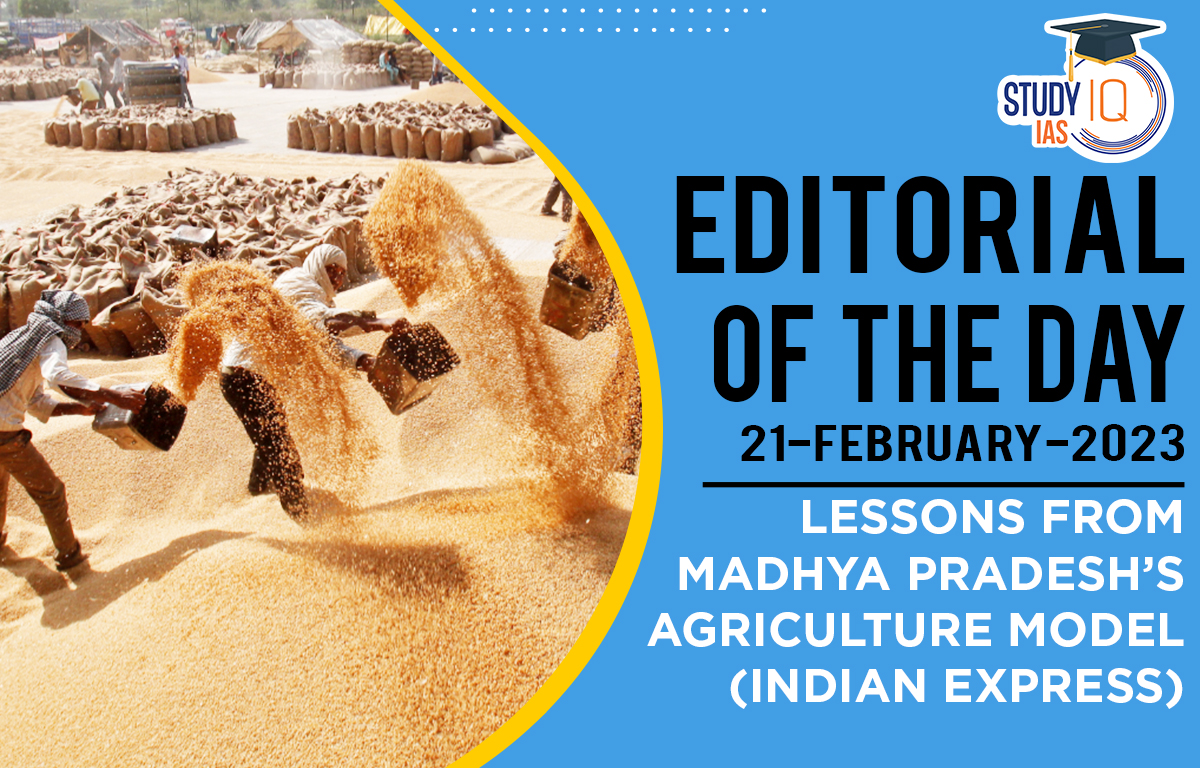Table of Contents
India is a $3.5 trillion economy today and may reach $5.4 trillion by 2027 if the current growth trend continues.
- The target of reaching $5 trillion economy by 2025 could be somewhat delayed due to global slowdown, but India seems to be on the right path and is doing pretty well.
- In 2022, India became a $3.5 trillion economy by adding $1.2 trillion in just six years. If the trend continues, the country could rise to a $25 to $30 trillion economy by 2047.
- Amidst the growth story, there are two issues that need to be focused on. First, how inclusive is this growth, and second, how sustainable the growth is, especially from an environmental perspective.
Measuring Inclusiveness of Growth in India
- Higher productivity jobs: Agricultural sector employs the largest share of workforce. With development, the workforce moves out of agriculture to higher productivity jobs in urban areas, especially in the construction and allied sectors.
- India’s focus in next 25 years should be on infrastructure construction, including in rural areas, and skilling a large mass of the working population for higher productivity jobs.
- GDP at state level: During the period of 2005-06 to 2021-22, India averaged a GDP growth of 6.7per cent per annum and its agri GDP growth stood at 3.8 per cent per annum.
- State wise, Gujarat topped the list in overall GDP growth at 8.9 per cent closely followed by Uttarakhand, Telangana and Haryana.
- Jammu and Kashmir, Assam, West Bengal, Uttar Pradesh and Jharkhand were at the bottom of the table.
Agri-GDP growth in BIMARU (Bihar, MP, Rajasthan, UP) States
- Madhya Pradesh: Madhya Pradesh has performed very well with a growth rate in agriculture at 7.3 per cent. Its overall GDP growth is 7.5 per cent.
- The state’s agri-GDP growth is above India’s agri-GDP growth. It has been able to double the contribution of horticulture in its value of agriculture and allied sector.
- MP has made a mark in tomato, garlic, mandarin oranges, pulses (especially gram) and soybean cultivation.
- MP is also the second-largest producer of wheat, and the third-largest producer of milk after UP and Rajasthan.
- Cultivation of pulses have saved cost of fertilizer, irrigation and power subsidies, and ensured environmental sustainability.
- Apart from a well-diversified portfolio in agriculture, it has doubled irrigation coverage from 24 to 45.3 per cent of its gross cropped area over the last two decades.
- MP is the only state in the country whose agriculture contribution to overall GDP has grown to 40 per cent, as against 18.8 percent at the national level.
- Rajasthan: Rajasthan has performed fairly well in agriculture, recording an annual average growth rate of 5.7 per cent, followed by UP and Bihar.
- Jharkhand: Carved out of Bihar, Jharkhand has performed well in agriculture with a growth rate of 6.4 per cent per annum, driven mainly by diversification towards horticulture and livestock.
Performance of Punjab
- Green Revolution champion Punjab has not performed well as its agri-GDP growth was a meagre 2 per cent per annum over the same period.
- This number could have been higher if the state had diversified to high-value horticulture, or even some pulses and oilseeds.
- It not only would have registered higher agricultural growth but also saved precious groundwater and power subsidy.
- The methane and nitrous oxide emissions from paddy cultivation could have been much less.


 TNPSC Group 4 Admit Card 2025 Out at tnp...
TNPSC Group 4 Admit Card 2025 Out at tnp...
 Species Added to India's Flora and Fauna...
Species Added to India's Flora and Fauna...
 Daily Quiz 02 July 2025
Daily Quiz 02 July 2025





















